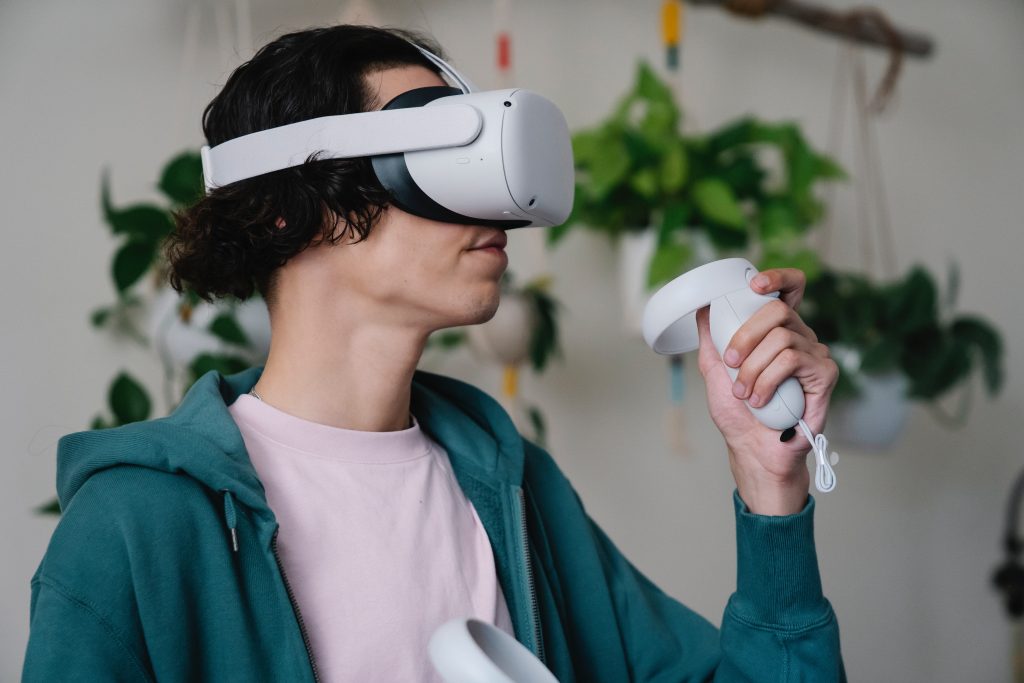Virtual Reality is a computer technology that simulates real or fictional environments that a person is taken to using a pair of VR glasses. In VR treatment, there is a step-by-step exposure to different environments, and a person learns to open up to and approach situations that cause discomfort.

This way, the opportunity for VR treatments for various conditions is created, ultimately alleviating patients’ suffering. Since the body can interact with the virtual model where primarily sight, but also hearing and in some cases feeling and smell are activated, the experience becomes almost authentic.
In this article, we take a look at some of the conditions where VR treatments have yielded positive results.
PTSD
Virtual reality has been proven to play a growing role in treating mental health conditions such as post-traumatic stress disorder.
People who have been through something very frightening, such as an accident, violence, war or abuse, after a while may suffer from PTSD. Common symptoms include nightmares, concentration problems and a tendency to avoid anything reminiscent of the event. This condition can be very debilitating and challenging to treat but studies have suggested that VR could be an effective treatment.
A professionally trained clinician supervises the entire progressive technique as the patient is slowly exposed to stimuli that trigger the reaction with high chances of helping them recover more quickly. The overall sensory experience enabled by VR makes the treatment more powerful and in combination with medications and other forms of therapy, it can relieve the symptoms of this condition and help patients live a better life.
Phobias
As with PTSD, a similar VR approach can be used to treat different phobias. Phobias are one of the most common anxiety disorders and a large percent of the world’s population is affected by them at some point in their lives.
Phobias are the perfect example of how VR can enhance standardized therapy.
By exposing patients gradually to their greatest fears with equipment that is lighter and more affordable, clinics and medical experts have found that this method can ultimately lead to real-world gains for people with phobias.
The exposure to disabling fears like spiders, flying or heights starts at an acceptable level and the individual is provided with sufficient time to relax around the fearful stimulus which ultimately subsides and leads to a more functional level of fear.
Eating Disorders
Eating disorders are serious conditions that cause great suffering to both victims and their families. Disorder diagnosis is a negative body image and an anxiety-driven relationship to food.
VR can give patients with body perception disorders the opportunity to move in VR environments as normal-weight avatars.
In virtual reality-assisted treatment, the patient is placed in an immersive, simulated 3D environment. During treatment, environments, treatment films or games are displayed on small monitors placed close to the eyes in a VR headset, often with associated sound, giving a feeling of being in the displayed environment. The patient interacts with the environment under the guidance of a therapist.
In exposure therapy for patients with eating disorders, VR can provide the opportunity to practice approaching anxious situations or places in a controlled way, such as kitchens or meals. Disturbed body perception is treated with VR tools, by allowing the patient to act in the virtual world with a normal-weight avatar.
Treating Strokes
The use of VR in physiotherapy is a relatively new area of research and technology is constantly evolving. With the help of VR technology, you can create goal-oriented tasks in a virtual environment.
It has been shown that many clients who’ve had a stroke have difficulty following exercise programs that are meant to be performed at home, usually due to lack of motivation. By creating a stimulating and interesting virtual environment, chances for the patient to perform therapeutic training are increased. Since rehabilitation requires a large amount of therapeutic training to be effective, anything that can increase the patient’s motivation to perform the movements is positive.
By adjusting the degree of difficulty of the training and making it more stimulating, one can encourage a state of flow. Flow is an enjoyable state that can occur when a task is appropriately demanding in relation to the person’s ability. Virtual reality can also be experienced as more motivating than other training and lead to better recovery.
Final Thoughts
VR is nowadays used in the treatment of different conditions and provides the opportunity for the therapist to expose patients to environments or situations that may be difficult to access or difficult to approach in practice.
The technology has been developed in collaboration with leading research institutes and experts and has become an increasingly common healthcare treatment for conditions like phobias, eating disorders and rehabilitation.
















Add Your Comment